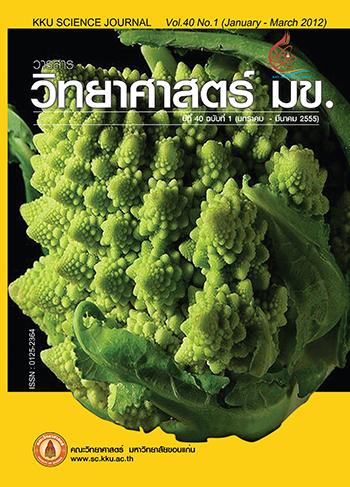Temporal Variations in Plankton Community and Hydrographic Conditions in a Green Mussel Raft-Cultured Area, Si Racha Bay, the Gulf of Thailand
Main Article Content
Abstract
The plankton community was studied twice a week from September 2006 to August 2007, in a green mussel raft-cultured area, Si Racha Bay, in the Gulf of Thailand. Phytoplankton was collected by filtering with a 20 µm plankton net and zooplankton was collected by vertical hauling with a plankton net of 330 µm mesh size. Several hydrographical conditions were measured in situ but nutrient analyses of water samples were carried out in the laboratory. Fifty seven genera of phytoplankton and 34 groups of zooplankton were recorded. The mean abundance of phytoplankton was 38,777 ± 27,453 units l-1 while that of zooplankton was 3,368 ± 1,183 ind. m-3. The dominant group of phytoplankton was diatoms; while copepods, cirripede nauplii, Lucifer sp., and Sagitta spp. were the major contributors to zooplankton abundance. Noticeable variation in composition of phytoplankton was demonstrated by an algal bloom of dinoflagellates (Ceratium furca (Ehrenberg) Claparède & Lachmann) in July 2007. The plankton community showed no significant differences in abundance between months in the annual cycle but the high value was during the Southwest monsoon. Moreover, the average value of primary production (3.85 ± 2.79 mg m-3) during the Southwest monsoon was higher than that of the Northeast monsoon season (1.11 ± 0.36 mg m-3). Composition variation was also influenced by water temperature, salinity, ammonia and dissolved oxygen. Hydrographical conditions and nutrients showed temporal fluctuations. In this regard, the maximum values of nutrients and dissolved oxygen agreed with Thai standard levels of seawater suitable for an aquaculture area.
Article Details

This work is licensed under a Creative Commons Attribution-NonCommercial-NoDerivatives 4.0 International License.


